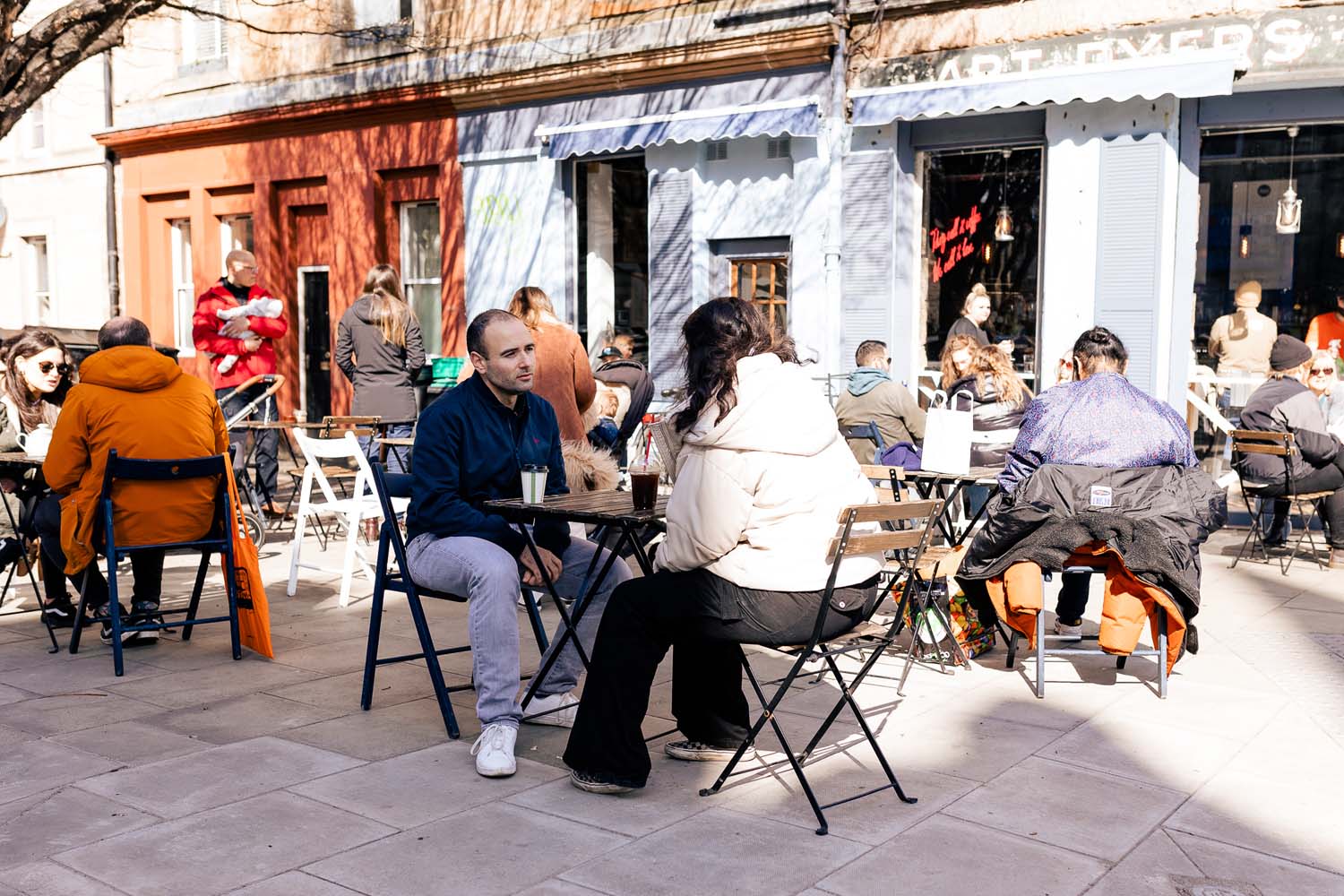As part of the roll out of our new Corporate Strategy we are publishing a series of blogs to expand on the main themes. In this blog Jim MacDonald, Chief Executive, Architecture and Design Scotland reflects on how our high streets have changed during a year of lockdown and adaptation.
The collapse of so many high street chains over the past year has put jobs at risk and triggered fears for the future of our town centres, which were already experiencing challenges before the pandemic. So, could this be the latest step in its evolution, instead of the dreaded death of the high street?
A recent post-lockdown visit to Edinburgh’s Princes Street on a freezing Saturday suggests that while our appetite for shopping may have dimmed, it seems that nothing can come between us and an alfresco drink. Whether this is evidence for demise or rebirth only time will tell but change is inevitable.
Expert knowledge and human connection
It is clear that shops will need to offer something you can’t get online – like expert knowledge or a space where people like to get together – if they are to survive. The new high street offer could be a mix of retail, entertainment, culture and wellbeing, of live-work space, of anything we want really.
Pop-ups and local boutique businesses are expected to thrive in high streets with strong local communities which points to a shift toward “20-minute” neighbourhood.
This shift is as much about the kind of place people want as it is about macro-economics and there is evidence that there is a strong appetite on the ground for this, both here and further afield. Its prominence within the current programme for government in Scotland appears to chime with this mood and is already beginning to influence practice on the ground.
Whole place approach
In Alva for example, the local community, Clackmannanshire Council and their partners – supported I should say by our excellent team at Architecture and Design Scotland – are adopting a ‘whole-place approach’ to rethinking the town centre, using the Place Standard to help understand the opportunities and the needs of its users, now and in the future.
You can see this work in our Alva Pathfinder case study.
At Architecture and Design Scotland, considering the whole place and supporting collaboration for a better future is at the core of our 10-year strategy.
Over in Ayrshire, the Maybole Regeneration Project is working with the community to create a thriving town centre that will better serve the local community, businesses and visitors.
Both of these are great examples of putting the Place Principle into practice while taking things to a whole new level, Sweden’s Street Moves Programme, imagines a 1-minute neighbourhood!
The important point to make is there will be as many solutions to this challenge as there are places.
Back on Princes Street, the transformation of the Binns building into a temple for all things whisky gives another example, suggesting that a very different future for our high streets is already here.
Header image credits: Miss Lydia Photography

